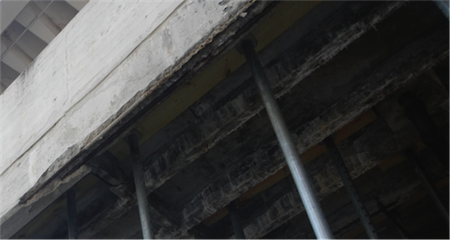One question that I was asked during a recent presentation was “What are the differences in materials between then and now and what improvements have been made to increase durability of parking structures?” I’m sure the question was relative to recent history. However, there are Roman structures such as the Colosseum and the Pantheon that are still in service today, despite being over 2000 years old. Given the lifetime of these ancient structures, why are we challenged to have our parking structures last 30 years or more with current technology? The answer is there are many roman structures that are not in service today, and the ones that are reside in moderate climates with no freeze thaw, low precipitation, and do not contain reinforcing steel. Also, the hydraulic cement mixed with aggregate and water to form concrete was made using volcanic ash. Being hydraulic meant that the cement, once hardened, would not break down when exposed to water. While it took months to a year to develop the strength and stiffness of this early concrete, the slow development produced fewer cracks and was therefore more durable. The Romans also understood that concrete was very strong in compression but weak in tension. This led them to use massive arches in compression, and very deep beams to limit the tensile stresses in the concrete.
The limitation to the early Cementitious materials however was that you had to be near a volcano in order to collect the ash, and be willing to wait a very long time after construction before you could occupy the building. Waiting months to a year for concrete to harden would not be acceptable in today’s fast-paced society.
As a substitute for this early volcanic ash-based cement, Portland Cement was invented in 1845 and later perfected in England by the descendants of the original inventor.
In 1854, understanding concrete’s weakness when it came to tensile strength and ductility (it’s ability to stretch) led to the use of iron bars and wire rope as reinforcement in building construction in England and France.
Portland cement was first produced in the United States in 1871 and further study and improvements in the production and use of the product continued.
The associations known today as the American Concrete Institute (ACI), Portland Cement Association (PCA), and the National Ready Mixed Concrete Association (NRMCA) were all formed in the 1900’s.
Prestressed Concrete was developed in 1927 in France. Steel cable reinforcement is stretched and concrete is cast around the cables. Once released, the steel cables prestress the concrete in compression, counteracting applied loads. Because prestressed concrete is seldom in tension, the formation of cracks which allow water ingress is minimized, making the concrete more durable.
Post-tensioned concrete, a variant of prestressed concrete where the tendons are tensioned after the surrounding concrete structure has been cast, cured, and hardened, was introduced to building construction in the mid 1950’s.
For most of the 1900’s, corrosion of Reinforcing steel within exposed structures was not a concern as long as they were properly designed and constructed. However, this began to change in the 1950’s when deicing salts started to be used on roadways to keep pavements free of snow and ice. Between 1950 and 1979, annual usage of deicing salts in the United States rose from 1 million tons per year to more than 12 million tons per year. While this “bare pavement” trend made roadways safer for the traveling public, it resulted in a significant increase in deterioration due to corrosion of the reinforcing steel when it was exposed to chloride ions contained within the deicing salt. Corrosion in the form of rust is formed when ferrous metal, water, and oxygen combine. Adding chloride ions to the mix from deicing salts is like throwing gasoline on a fire thus accelerating this corrosion. To make matters worse, rust expands the parent metal 6 to 10 times its original volume. This expansion causes cracks and spalls in the concrete which further exposes reinforcing steel to the ingredients for corrosion.
Consequently, the design and construction of durable reinforced concrete parking structures has been focused on minimizing the corrosion of concrete reinforcement. Please refer to Part II of this article which covers the latest trends in achieving durable reinforced concrete for both new and existing parking structures.

